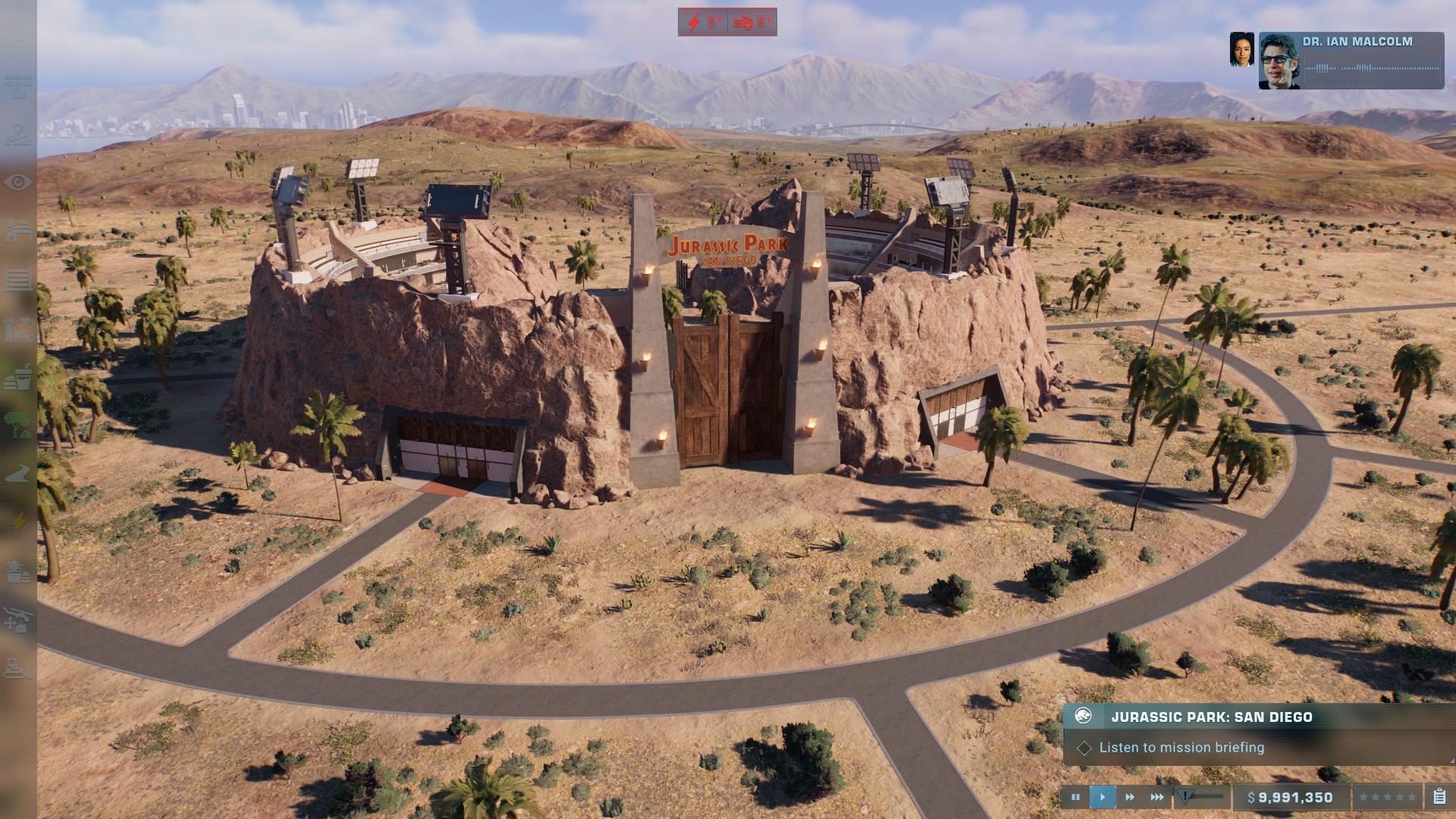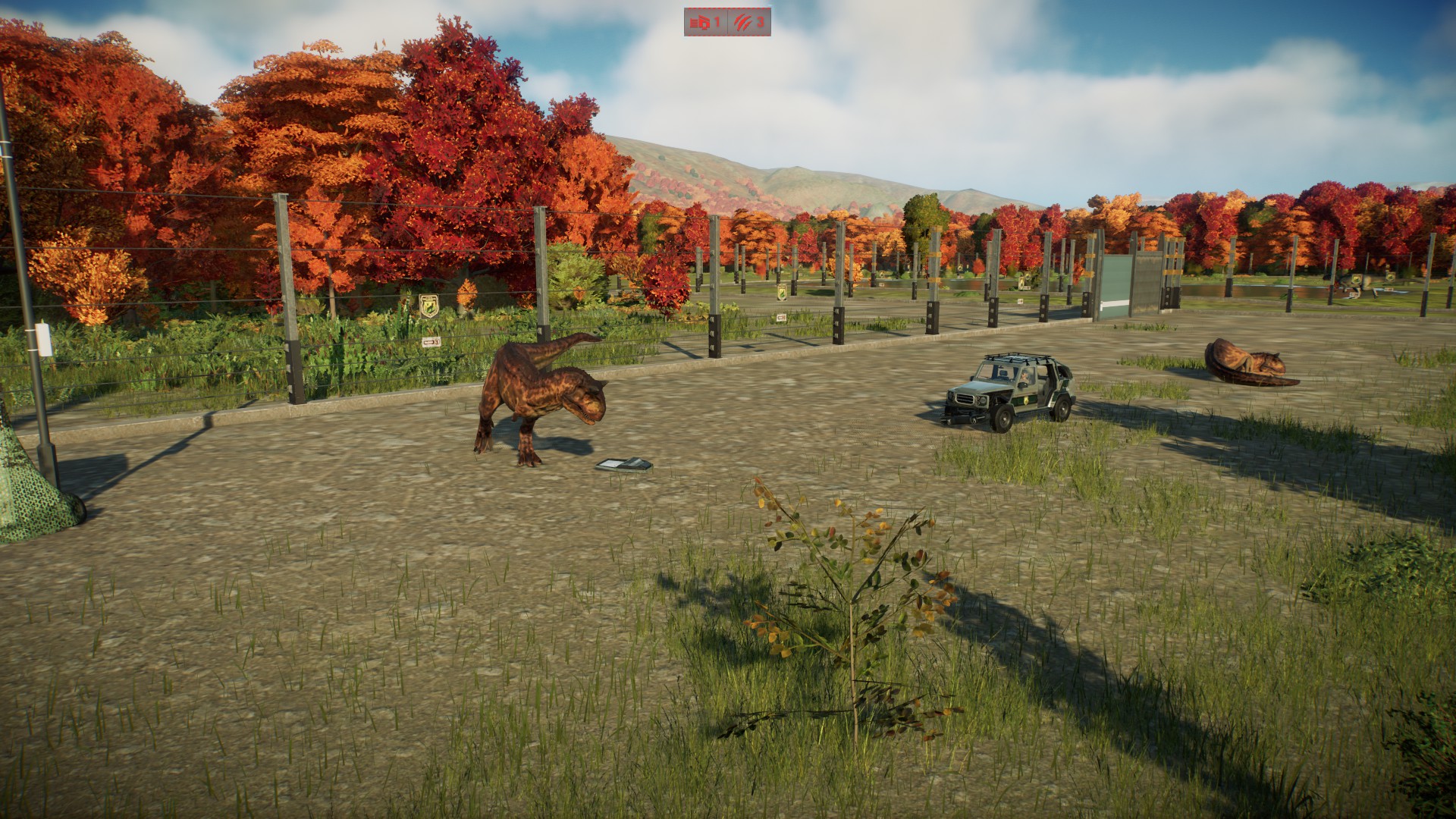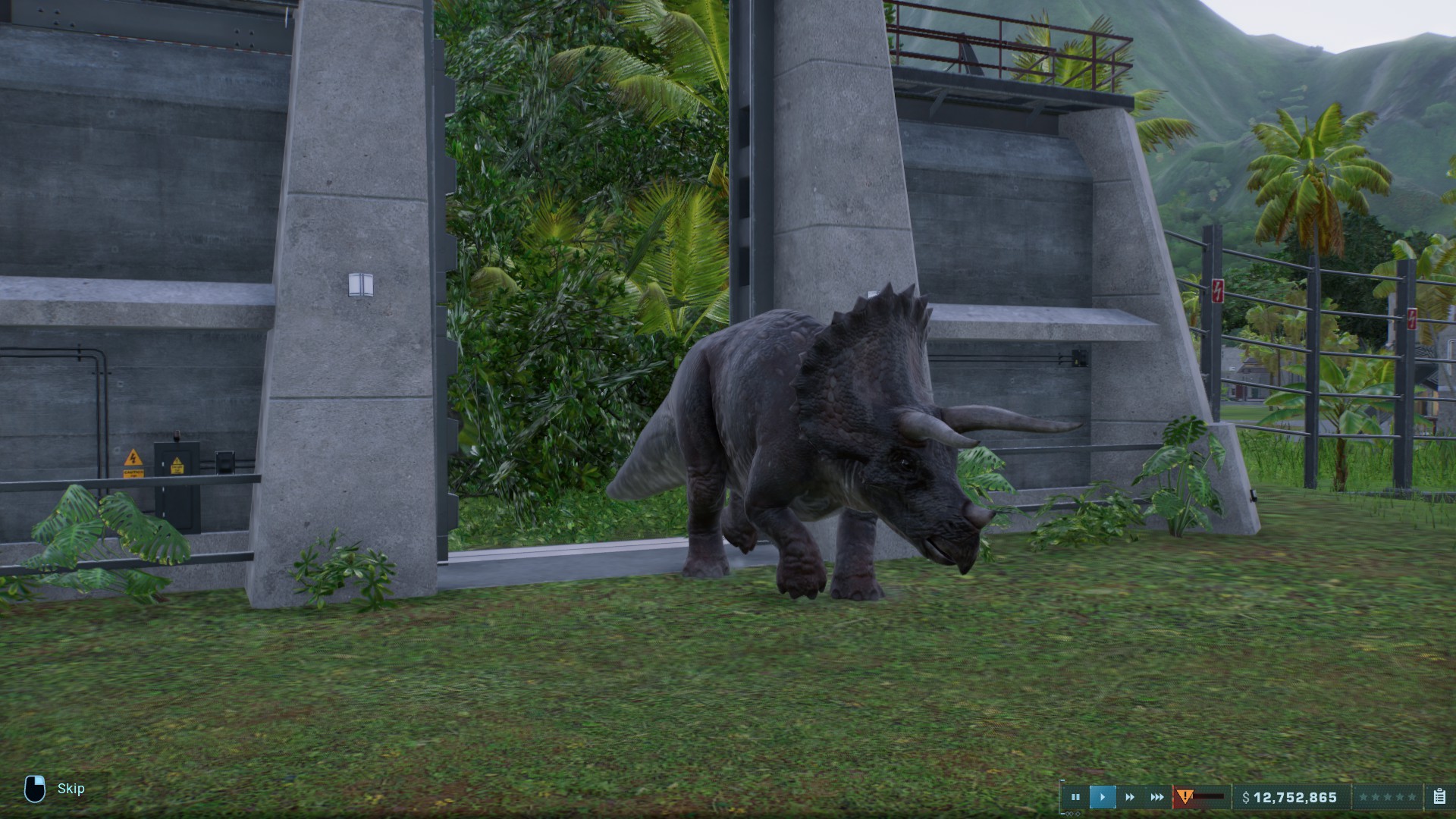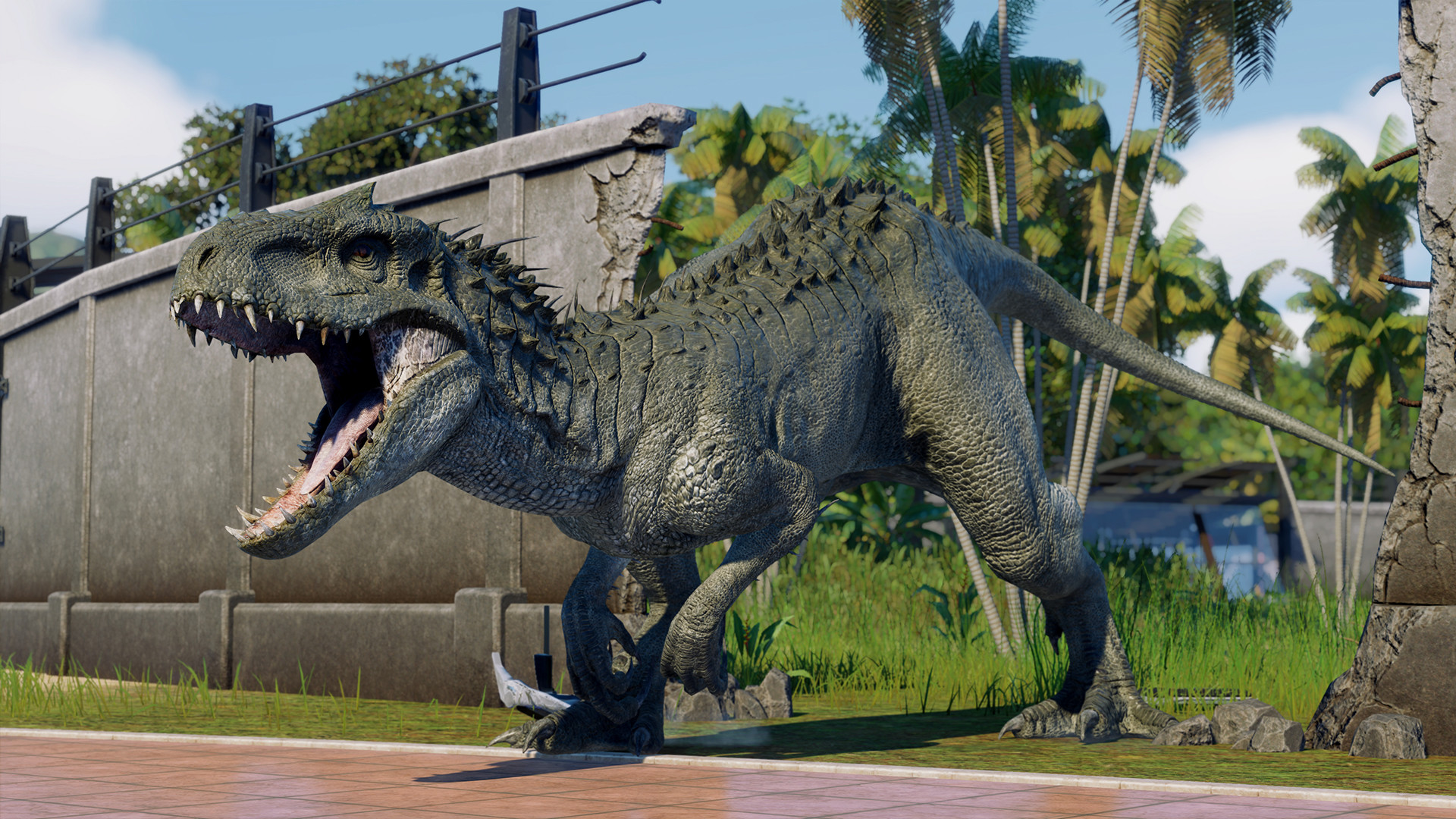Our Verdict
The constant threat of chaos adds tension and fun to an otherwise basic management sim.
PC Gamer's got your back
What is it? A management sim based on the Jurassic Park franchise
Expect to pay $60/£50
Developer Frontier
Publisher Frontier
Reviewed on Nvidia GTX 970, Intel I5-4460, 32GB Ram
Multiplayer? No
Link Official site
Zoo Tycoon was one of my favourite games growing up. I wasn’t so much interested in caring for the animals, but blocking the exits with countless vending machines and unleashing an army of underfed tigers upon the trapped guests never failed to entertain. In the decades since, I’ve never quite managed to recreate that same sense of anarchic fun, but watching a T-rex fling scientists into the air as it runs rampage in Jurassic World Evolution 2 comes pretty close.
The premise is simple, you’re tasked with the construction and management of a series of dinosaur theme parks fashioned after those of the titular film franchise. The campaign’s narrative picks up directly after the events of the latest movie, Fallen Kingdom, with humanity struggling to adapt to life among an abundance of (spoiler alert) recently escaped dinosaurs. Unfortunately, the whole story, which consists of only five total missions, can be comfortably completed in under two hours, leaving little room for development in the hastily explained plot.
In fact, apart from a cliffhanger ending which teases the upcoming movie, the story hardly attempts to expand the wider universe. Still, series fans will likely appreciate the surplus of wonderfully acted lines from Jeff Goldblum—who reprises his role as Dr Ian Malcolm. Bryce Dallas Howard portrays Claire Dearing and several other cast members also return, but their presence only highlights the noticeable absence of Chris Pratt. Even though Pratt’s stand-in does an okay job with the character of Owen Grady, his performance pales when placed directly alongside the original. Whether the understandable byproduct of budget constraints or scheduling conflicts, it’s a shame that they couldn’t get at least a couple lines recorded with the man himself.

Any form of traditional tutorial is also conspicuously absent, seemingly abandoned entirely in favour of brief guided sections in the campaign. Thankfully things never became too confusing but the inability to get a quick refresher on basic mechanics makes for an uncomfortable transition between the strictly linear campaign and the more open-ended sandbox, challenge and Chaos Theory modes. It’s a shame too, because although sandbox and challenge are fairly self explanatory, Chaos Theory is well worth a look.
Presenting various ‘what if’ scenarios based on events from each of the five films, the first level has you create your own Jurassic Park in an environment perfectly modelled after that of the original. It’s all gloriously nostalgic and, thanks to the huge amount of care that has evidently been taken to preserve the unique aesthetics of buildings from the park’s distinct eras, each mission’s locale is instantly recognisable.
Changes aren’t just in the visual department either, with a handful of new mechanics like aquatic enclosures or monorail systems setting the more modern settings apart from their predecessors. For players who just want to experiment outside the strict constraints of different time periods, sandbox mode gives you the option to circumvent these building restrictions entirely, and, while admittedly not as deep as the visual customisation in other Frontier titles, the option to further tweak the look of specific dinosaurs or vehicles with a selection of unlockable skins is a nice touch.

Although the campaign mode focuses solely on creating enclosures to house various dinosaurs, with success represented by an increasing overall comfort level, the others introduce humans into the equation. While dinosaurs are easily satisfied through the placement of a couple objects or quick change in terrain type, park guests have two sets of needs to fulfill. There are basic requirements, like access to food and drink, and secondary needs determined by the visitor’s adherence to one of four categories: luxury, adventure, nature and general. Taking luxury as an example, this type of guests demand the presence of higher cost attractions like spas or hotels.
Watching a velociraptor prance around a cage is cool for sure, but seeing it rampage through the park is even better
Disappointingly though, I quickly discovered that these categories are almost entirely redundant in practice and the haphazard placement of a few toilets, food stalls, and emergency shelters always proved more than enough to keep the majority of my visitors happy. While individual guest needs are a good idea on paper, it’s weird you can run a profitable park while choosing to ignore them. There are also small annoyances here and there, like having to manually refill a building’s fuel supply every time it runs dry or the inconsistent collision detection that occasionally makes object placement miserable.
Despite this, I always found that the allure of the dinosaurs themselves proved more than enough to hold my interest. Each of the 75 or so unique species is wonderfully modelled and beautifully animated, a fact which you can only truly appreciate by taking manual control of one of your park’s vehicles to see them up close. Where the dinosaurs are at their absolute best however, is in the rare moments where things start to go well and truly wrong. Watching a velociraptor prance around a cage is cool for sure, but seeing it rampage through the park is even better and the damage modelling for walls and vehicles does a great job at emphasising the creatures’ immense destructive powers.

The ragdoll physics, which have guests hurtling across the map at absurd speeds, are routinely hilarious and the constant threat of random tropical storms, which can knock out power and destroy enclosure walls, mean that even the most well-maintained park is always mere moments away from total carnage. Throw the genetic traits system into the mix, which can lead to even more aggressive varieties of dino if you’re not careful, and the result is a game that feels more in line with survival horror than traditional park tycoon.
You know something is bound to go wrong eventually and, like watching the movies for the first time, you’re left on edge just waiting for the inevitable to happen. There’s nothing else quite like it and, given the simplicity of the simulation elements, this unique dynamic is easily one of the biggest reasons to recommend Jurassic World Evolution 2.
The constant threat of chaos adds tension and fun to an otherwise basic management sim.
With a gaming knowledge that ranges from news on the latest Nintendo Switch otomes to almost 4,000 hours (and counting) wasted in Hitman: Absolution, there’s almost nothing Dashiell won’t play. He spends the portion of his days not allocated to more Hitman: Absolution time trying out new games or desperately tweaking the spelling of his upcoming articles. As a freelance writer, he can also be found in PLAY magazine and SFX among others.


